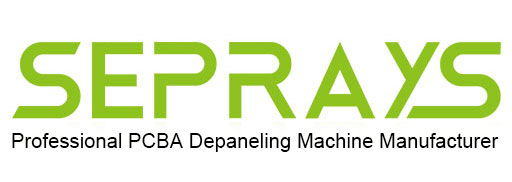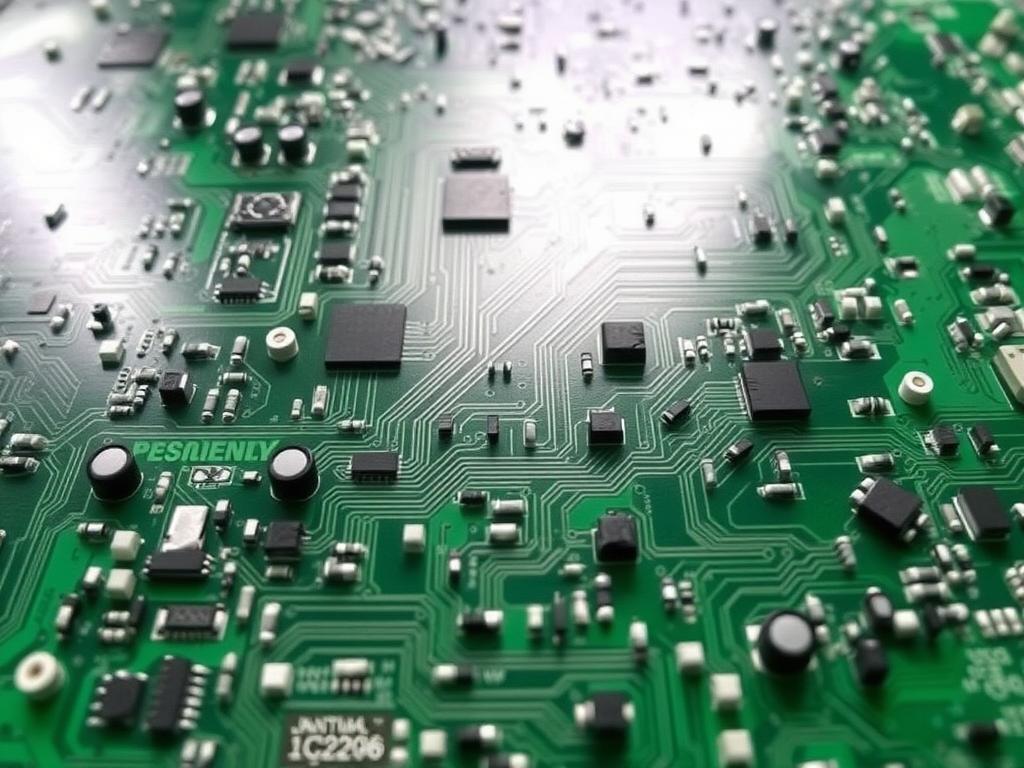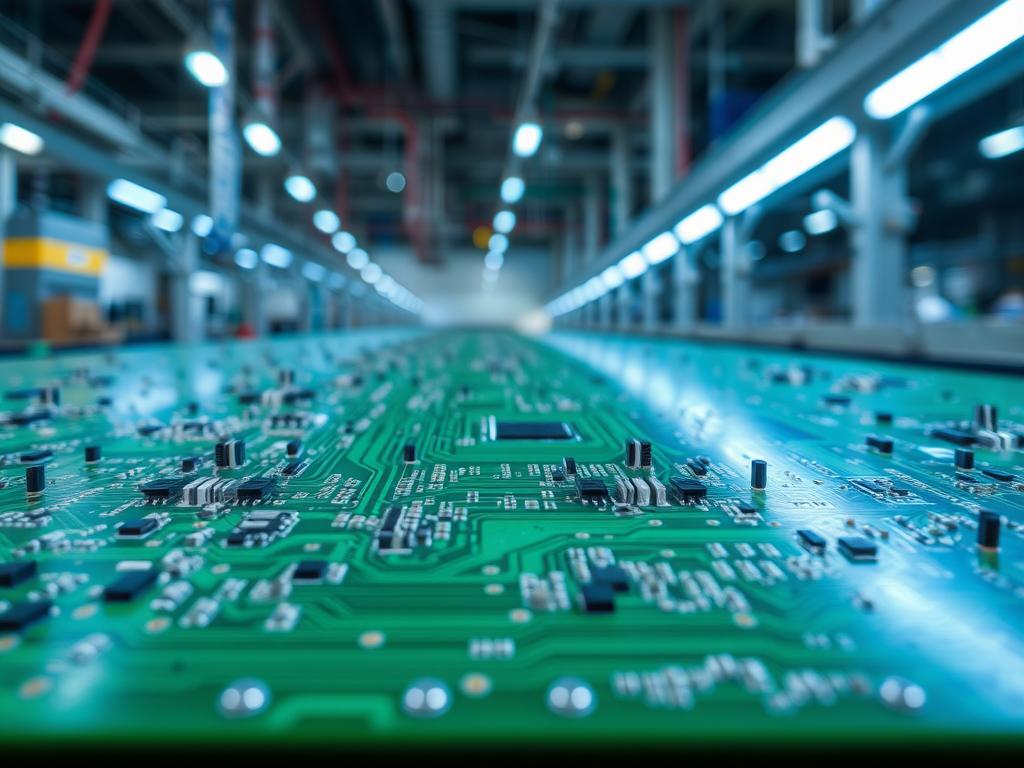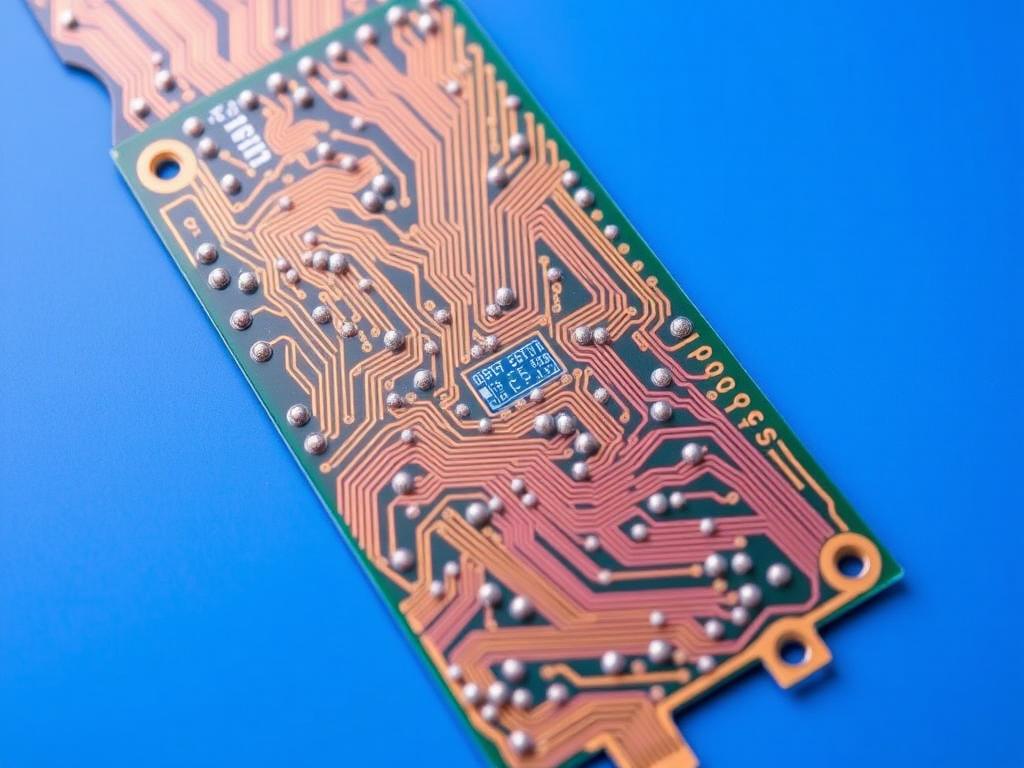![]()
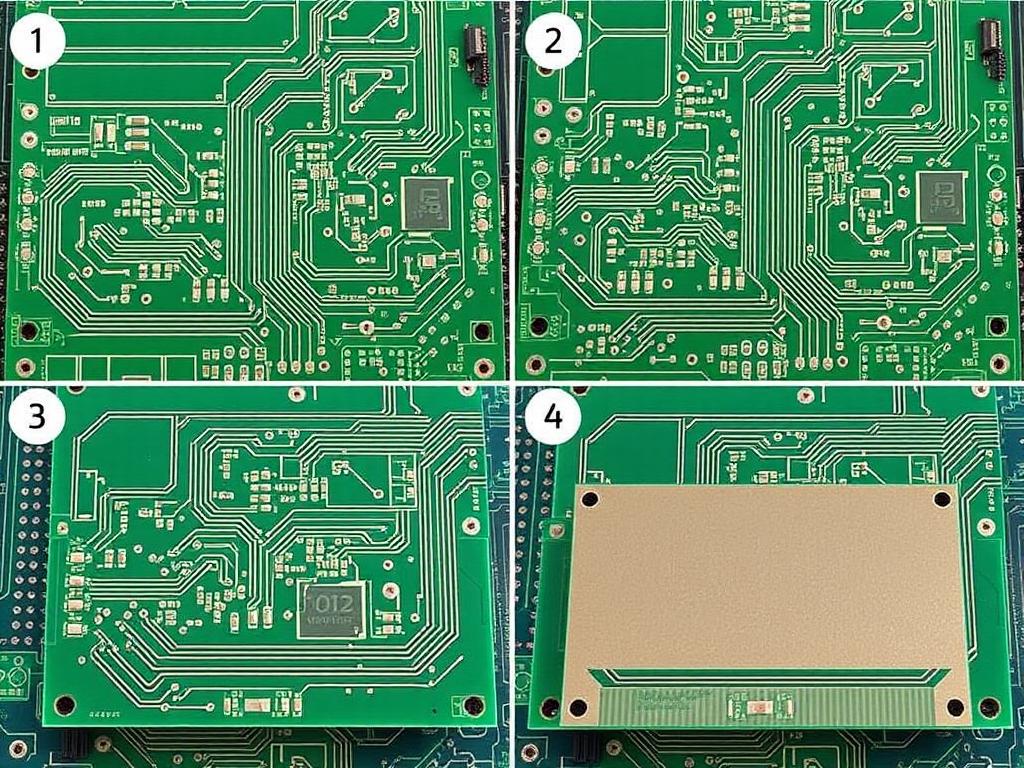
Steps in PCB depaneling
From Manual to Laser: Revolutionizing PCB Depaneling for Efficient Production
For over two decades, I’ve witnessed the fascinating evolution of PCB depaneling. From the rudimentary days of manual separation to the sophisticated precision of laser technology, the journey has been remarkable. This article delves into the diverse méthodes de dépaneling de PCB, exploring the transition from manual techniques to advanced dépanelage au laser, and why choosing the right approach is crucial for modern circuit imprimé manufacturing. Understanding these methods is essential for anyone involved in electronics production, ensuring quality, minimizing stress, and optimizing efficiency. Join me as we explore this critical step in the processus de dépanélisation.
Plan de l'article
Here’s what we’ll cover in detail:
What are the Traditional Methods of PCB Depaneling and Are They Still Relevant? Why is Dépaneillage au laser Becoming the Gold Standard in Modern PCB Manufacturing? How Does a Machine de routeur de carte PCB Offer a Robust Depaneling Solution? When is Dépanneaux à rainure en V the Most Rentable Choice? What Role Does a Poinçonneuse PCB/FPC Play in the Depaneling Process? Why Consider Équipement automatique to Streamline Your Depaneling Workflow and Boost Débit? What Accessoires are Essential for Maintaining Optimal Depaneling Performance? How Does Laser Technology Provide Superior Precision Compared to Other Depaneling Methods? What Key Factors Should You Consider When Sélection de la bonne méthode de dépaneling for Your Needs? Ready to Optimize Your PCB Depaneling Process for Maximum Efficiency and Assurance qualité?
What are the Traditional Methods of PCB Depaneling and Are They Still Relevant?
In the early days of fabrication de circuits imprimés, démontage manuel was the norm. Imagine technicians carefully breaking the pcb along pre-scored lines or using hand-held cutting tools. While this méthode de dépanélisation is still sometimes used for low-volume production or prototyping, it carries significant drawbacks. The inherent risk of contrainte mécanique being applied unevenly can lead to component damage or board fractures, impacting the overall quality assurance. Furthermore, achieving consistent processus de séparation and clean edges is challenging, making it less suitable for intricate conception de circuits imprimés or delicate components. Even with skilled operators, the Débit of manual depaneling is limited, struggling to keep pace with the demands of modern production lines. While rentable in terms of initial capital investment, the potential for errors and the slow pace make it less ideal for scaling.
Another traditional méthode de dépanélisation est v-scoring ou rainure en V depaneling. This involves pre-scoring Panneaux de circuits imprimés with a V-shaped groove along the intended processus de séparation. Le PCB individuels are then snapped apart. While faster than manual methods, rainure en V depaneling still introduces contrainte mécanique, particularly on thicker boards or those with components close to the score line. It’s a relatively simple and rentable méthode pour panneau plus grand sizes and straight-line separations, but it lacks the flexibility for complex shapes and can lead to burrs or uneven edges if not carefully controlled. Despite its limitations, rainure en V depaneling remains a viable option for certain high-volume applications where the conception de circuits imprimés is straightforward and the risk of component damage is low. We offer a range of Dépanneaux à rainure en V solutions like our Séparateur à guillotine pour PCB ZM30-P, demonstrating that even traditional methods can be enhanced with modern engineering.
Why is Laser Depaneling Becoming the Gold Standard in Modern PCB Manufacturing?
Le paysage de démontage de PCB has been dramatically transformed by the advent of laser technology. From my perspective as a provider of various depaneling solutions, including Dépannage laser des PCB, I’ve witnessed firsthand the unparalleled advantages it offers. Dépaneillage au laser utilizes a highly faisceau laser focalisé to precisely cut through the matériau PCB, efficacement separating individual printed circuit boards de la pcb panel. The key benefit lies in its non-contact nature. Unlike mechanical methods, découpe laser eliminates contrainte mécanique, ensuring even the most delicate components remain unharmed. This is especially crucial for high-density boards and flexible circuits.
The precision of dépanelage au laser is unmatched. The ability to control the puissance laser, vitesse de coupe, et taille du spot focalisé allows for intricate cuts and complex profiles that are simply not achievable with other méthodes de dépaneling de PCB. This precision translates to clean, smooth edges, reducing the need for post-processing and improving the overall aesthetic and functionality of the individual printed circuit. Furthermore, systèmes laser offer exceptional flexibility. With programmable cutting paths, they can handle a wide variety of mise en panneaux de circuits imprimés designs and adapt quickly to changing production needs. The speed and accuracy of dépanelage au laser also contribute significantly to increased Débit and reduced cycle times. Our Machine de découpe laser de haute précision DirectLaser H1 exemplifies this technology, offering unparalleled precision for even the most demanding applications. The transition from manual to laser represents a significant leap in efficiency and quality.
How Does a PCB Router Machine Offer a Robust Depaneling Solution?
Le machine de routeur de circuits imprimés stands as a versatile and reliable solution in the realm of démontage de PCB. As a provider of these machines, including models like the Machine de dépannage du fond des PCB GAM 380AT, I can attest to their effectiveness in handling a wide range of carte de circuit imprimé types and thicknesses. These machines utilize a high-speed fraise à défoncer to precisely mill along the pre-programmed paths, effectively separating individual pcbs from a larger pcb panel. One of the key advantages of a routeur is its ability to handle complex contours and internal cutouts, offering greater design freedom compared to simpler methods like rainure en V.
Machines de fraisage de PCB are particularly well-suited for applications where minimizing stress is important, although they do involve physical contact with the carte de circuit imprimé. Modern routers incorporate features like optimized cutting parameters and secure fixturing to minimize vibration and ensure clean cuts. The level of automation offered by these machines also contributes to increased Débit and consistency. Many machines de routeur de circuits imprimés can be integrated into automated production lines, further enhancing efficiency. While the largeur de coupe (the amount of material removed by the fraise à défoncer) is a factor to consider in conception de circuits imprimés, advancements in tooling and machine control have minimized this impact. Our range of Machine de routeur de carte PCB options caters to various production needs and complexities.
When is V-Groove Depaneling the Most Cost-Effective Choice?
Malgré les progrès réalisés dans laser and routing technologies, rainure en V depaneling remains a strategically advantageous and rentable option for specific fabrication de circuits imprimés scenarios. From my perspective, having witnessed its continued use in high-volume production, its simplicity and speed are its key strengths. When dealing with circuits imprimés that have straight-line separations and are designed with sufficient spacing between components and the rainure en V, this method offers a rapid and economical way to séparé le circuits imprimés individuels.
The primary cost savings with rainure en V depaneling come from the relatively low initial capital investment required for the equipment and the speed of the processus de coupe. Pour panneau plus grand sizes with multiple identical circuits imprimés, the time saved compared to routing or manual methods can be significant, leading to higher overall Débit. However, it’s crucial to acknowledge the limitations. Rainure en V depaneling is not suitable for circuits imprimés with complex shapes, internal cutouts, or components placed close to the intended separation lines due to the contrainte mécanique involved. Careful conception de circuits imprimés and consideration of épaisseur du PCB are essential for successful rainure en V depaneling. Our Machine de dépannage à rainure en V de type poussoir ZM30-M is a testament to the efficiency and cost-effectiveness this method can offer in the right circumstances.
What Role Does a PCB/FPC Punching Machine Play in the Depaneling Process?
Le Poinçonneuse PCB/FPC offers a unique approach to démontage de PCB, particularly well-suited for specific applications involving carte de circuit imprimé and flexible printed circuits (FPCs). Having seen these machines in action, including our Machine de découpe et de poinçonnage PCB et FPC ZM10T et 15T, I recognize their efficiency in high-volume production where the circuits imprimés individuels have relatively simple shapes and pre-defined break-away tabs. These machines utilize custom-made dies to precisely punch out of the panel le PCB individuels.
The primary advantage of a punch machine lies in its speed and ability to handle high volumes efficiently. Once the tooling is set up, the processus de coupe is very fast, making it ideal for mass production of circuits imprimés with repetitive shapes. This method minimizes stress on the components if the tooling is properly designed and maintained. However, the initial cost of the tooling and the inflexibility for complex shapes are important considerations. Machines de poinçonnage PCB/FPC are best suited for situations where the conception de circuits imprimés is stable and the production volume justifies the tooling investment. They are particularly effective for séparer l'individu FPCs or circuits imprimés with simple outlines and strategically placed languette relations.
Why Consider Automatic Equipment to Streamline Your Depaneling Workflow and Boost Throughput?
In today’s demanding manufacturing environment, équipement automatique plays a pivotal role in optimizing efficiency and maximizing Débit dans le processus de dépanélisation. From my perspective, offering solutions like our Machine de tri et de palettisation automatique GAM 630V, I understand the significant benefits automation brings. Integrating automated depaneling solutions can drastically reduce manual handling, minimizing the risk of human error and component damage.
Equipement automatique can seamlessly integrate with other stages of the production line, creating a continuous and efficient workflow. This includes automated loading and unloading of Panneaux de circuits imprimés, as well as automated sorting and stacking of the dépanné planches individuelles. For high-volume production, the increased speed and consistency offered by automation translate directly into significant time and cost savings. While the initial capital investment might be higher, the long-term benefits of increased Débit, reduced labor costs, and improved quality assurance make équipement automatique a compelling investment for many manufacturers. Furthermore, automation allows for more consistent and predictable output, which is crucial for meeting tight deadlines and managing production schedules effectively.
What Accessories are Essential for Maintaining Optimal Depaneling Performance?
Maintaining optimal performance of any démontage de PCB equipment, be it a laser, router, or punch machine, requires careful attention to essential accessoires. From my experience providing these machines and related components, I know that the right accessoires can significantly impact the quality of the processus de coupe, the longevity of the equipment, and overall efficiency. For machines de routeur de circuits imprimés, the selection of high-quality fraise bits is paramount. Using sharp and appropriate bits ensures clean cuts, reduces burrs, and minimizes wear and tear on the machine spindle. Regular replacement of worn bits is crucial for maintaining optimal performance.
Pour dépanelage au laser systems, maintaining the cleanliness of the source laser and optics is vital for consistent rayon laser delivery and cutting accuracy. Regular cleaning and alignment procedures are essential. Similarly, for Machines de poinçonnage PCB/FPC, ensuring the dies are sharp and properly aligned is critical for clean and accurate processus de séparation. Proper maintenance schedules and the use of genuine replacement parts are key to maximizing the lifespan and performance of all depaneling equipment. Even seemingly simple accessoires, like the correct fixturing for holding the pcb panel securely, play a significant role in ensuring accurate and efficient depaneling. We offer a range of Accessoires comme notre Fraise to help our customers maintain peak performance.
How Does Laser Technology Provide Superior Precision Compared to Other Depaneling Methods?
The precision offered by la technologie laser fournit a significant advantage in démontage de PCB compared to other methods. Having worked with various depaneling technologies for years, including laser, router, and punch machines, the inherent nature of the faisceau laser focalisé allows for unparalleled accuracy and control. Unlike mechanical methods that involve physical contact and the potential for vibration or material deformation, dépanelage au laser is a non-contact process. This eliminates contrainte mécanique sur le carte de circuit imprimé and its components, making it ideal for delicate boards and flexible circuits.
Le taille du spot focalisé de la rayon laser is incredibly small, allowing for intricate cuts and complex geometries that are simply not achievable with traditional methods. The ability to precisely control the puissance laser, vitesse de coupe, and beam path enables clean, smooth edges with minimal largeur de coupe. This precision minimizes the need for post-processing and ensures the dimensional accuracy of the circuits imprimés individuels. Furthermore, systèmes laser are highly programmable, offering flexibility in handling a wide range of mise en panneaux de circuits imprimés designs and adapting quickly to changing production requirements. The use of laser UV or shorter wavelengths further enhances precision, particularly when working with advanced matériau PCB. The level of detail and control offered by dépanelage de PCB au laser is a game-changer for industries demanding the highest levels of precision and quality.
What Key Factors Should You Consider When Selecting the Right Depaneling Method for Your Needs?
Choisir le bon méthode de dépanélisation is a crucial decision that can significantly impact your production efficiency, cost-effectiveness, and product quality. Based on my extensive experience in the carte de circuit imprimé industry, several key factors should be carefully considered. The first and foremost is the type of pcb you are working with. Consider the épaisseur du PCB, the sensitivity of the components, and the complexity of the board’s shape. For delicate boards or those with intricate outlines, dépanelage au laser often emerges as the superior choice due to its non-contact nature and precision.
Production volume is another critical factor. For high-volume production of circuits imprimés with simple, straight-line separations, rainure en V depaneling can be a very rentable solution. Machines de fraisage de PCB offer a good balance of flexibility and throughput for medium to high volumes and more complex shapes. The initial capital investment and ongoing operating costs associated with each method should also be carefully evaluated. Systèmes laser typically have a higher upfront cost but offer lower operating costs in the long run due to reduced tooling requirements. Finally, consider the level of automation required for your production line. Equipement automatique can significantly boost Débit and reduce manual labor, but it requires a higher initial investment. Carefully weighing these factors will guide you towards choisir la bonne méthode de dépaneling that aligns with your specific needs and optimizes your fabrication de circuits imprimés processus.
Ready to Optimize Your PCB Depaneling Process for Maximum Efficiency and Quality Assurance?
Avec 20 ans d'expérience dans le carte de circuit imprimé depaneling industry, I’ve seen firsthand the transformative power of choosing the right equipment and methods. Whether you’re transitioning from manual to laser, exploring the robustness of a machine de routeur de circuits imprimés, or optimizing your rainure en V line, understanding your options is the first step towards achieving efficient depaneling. We at pcbdepaneling.com offer a comprehensive range of solutions, from high-precision dépanelage au laser systems to reliable Machine de routeur de carte PCB options and efficient Dépanneaux à rainure en V equipment. Our Poinçonneuse PCB/FPC solutions cater to high-volume needs, and our Équipement automatique can streamline your entire workflow. We also provide essential Accessoires to keep your operations running smoothly. Trusted by industry leaders like TP-LINK, Canon, BYD, and Foxconn, we are committed to providing the best méthodes de dépaneling de PCB tailored to your specific requirements.
Don’t let inefficient depaneling bottleneck your production. Contact us today to discuss your needs and discover how our expertise and cutting-edge technology can help you achieve maximum efficiency and quality assurance in your processus de dépanelage de PCB.
- Dépaneillage au laser offers unparalleled precision and minimizes stress, ideal for delicate and complex PCBs.
- Machines de fraisage de PCB provide a versatile solution for various shapes and thicknesses.
- Dépaneillage à rainures en V remains a cost-effective option for high-volume, straight-line separations.
- Equipement automatique significantly boosts throughput and reduces manual handling.
- Choosing the right method depends on your PCB type, production volume, and budget.
FAQ
What is the main advantage of laser depaneling over mechanical methods? The main advantage is the elimination of contrainte mécanique due to its non-contact méthode de coupe, ensuring no damage to sensitive components.
Is laser depaneling suitable for all types of PCBs? While highly versatile, very thick circuits imprimés might require multiple passes or higher puissance laser, impacting vitesse de coupe.
How does a PCB router machine ensure clean cuts? Modern routers utilize high-speed spindles, sharp fraise à défoncers, and secure fixturing to minimize vibration and ensure smooth edges.
What are the limitations of v-groove depaneling? It is best suited for straight-line separations and may not be suitable for circuits imprimés with components close to the score lines due to potential contrainte mécanique.
What is the benefit of using automatic equipment for depaneling? Equipement automatique increases Débit, reduces manual labor, and minimizes the risk of human error, leading to improved consistency and efficiency.
